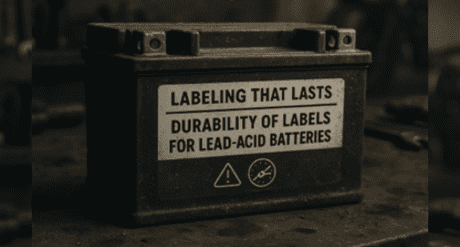
What’s Trending In Compliance In January 2025

This blog was originally posted on 27th January, 2025. Further regulatory developments may have occurred after publication. To keep up-to-date with the latest compliance news, sign up to our newsletter.
At Compliance & Risks we help manufacturers, retailers and their supply chain partners to monitor and manage global regulations via C2P, our compliance knowledge management platform.
We break down some of the top compliance trends in January 2025 that are generating the most interest globally this month.
1. EU: General Product Safety Regulation (GPSR) Guidance, Presentation, December 2024
Following the entry into force of the EU’s new regulatory regime for the safety of products on 13 December 2024, the EU Commission has prepared a presentation to assist businesses in understanding the objectives of the Regulation, the parties who should be concerned by its provisions and the products falling within its scope.
Further guidance is given regarding the interaction of the GPSR with harmonized legislation, with clarifications on what extra obligations will now apply to parties already complying with existing harmonized rules, such as accident reporting and complaint handling.
Businesses are given direction as regards compliance with traceability requirements, and the Commission has also set out clearly the two distinct methods, both mandatory, of supplying product information i.e. information to be provided on the physical product, and information to be provided in the product offer in the case of distance sales.
Safety obligations of providers of online marketplaces are discussed in the presentation, with emphasis on the close interplay with the Digital Services Act.
2. EU: Ecodesign for Sustainable Products Regulation, Frequently Asked Questions, September 2024
The EU Commission’s DG GROW is seeking comments to inform the development of a Single Market Strategy for 2025.
In a call for evidence issued on 3 January 2025, the Directorate announced that it intends to further develop the single market through a Strategy to be circulated in Q2 this year.
The Strategy will promote the cross-border movement of goods, ensure existing rules are fully implemented and strive to remove existing regulatory and administrative barriers.
Based on the problem definition as outlined by DG GROW, the resulting strategy could potentially entail the following impacts for existing EU product legislation:
- Increased Harmonization
- Digitalization
- Sustainability
- Reduced Administrative Burden
The Commission is planning to produce a Commission Communication detailing the full strategy in June, after which a clearer picture will emerge of any legislative proposals arising therefrom.
Feedback can be submitted until 31 January 2025.
3. USA: Radio Equipment Authorization Approval Guide under 47 CFR 2, 2024
This Guide describes the process of obtaining the required equipment authorization for radio/wireless devices.
Equipment that contains an RF device must be authorized in accordance with the appropriate procedures specified in 47 CFR part 2, subpart J as summarized in the Guide (with certain limited exceptions). These requirements minimize the potential for harmful interference, and also ensure that the equipment complies with the rules that address other policy objectives – such as human RF exposure limits and hearing aid compatibility (HAC) with wireless handsets.
The Commission has two different approval procedures for equipment authorization – Certification and Supplier’s Declaration of Conformity (SDoC). The required procedure depends on the type of equipment being authorized as specified in the applicable rule part. In some instances, a device may have different functions resulting in the device being subject to more than one type of approval procedure.
4. UK: Statutory Guidelines on Lithium-ion Battery Safety for E-bikes, Guidance Document, December 2024
Published in December 2024, these statutory guidelines are made by the UK Department for Business and Trade. They aim to assist businesses in producing safe lithium-ion batteries for use in e-bikes.
Lithium-ion batteries used in e-bikes can pose a fire risk through a process known as thermal runaway. These guidelines set out the safety mechanisms that these batteries shall contain to address the risk of thermal runaway. They must be taken into account by producers of lithium-ion batteries when assessing whether their battery meets legal safety requirements and by distributors in ensuring they do not supply products that they know or ought to know to be dangerous, in line with their legal requirements under the General Product Safety Regulations 2005 (GPSR) as it applies in Great Britain (GB).The adherence to these guidelines is strongly recommended for businesses who place the concerned products on the UK market.
Notably, the GPSR applies to all lithium-ion batteries for e-bikes; this includes those that are sold online or sold for use with or as part of a conversion kit. Placing a lithium-ion battery on the market if it is not a safe product constitutes an offence. Sanctions, including criminal sanctions, apply to those who do not comply with the GPRS.
5. Canada: Proposed Roadmap to Extend the Life of Plastics in End-of-Use Electronics, Consultation Document, December 2024
The Environment and Climate Change Canada (ECCC) is currently seeking public input on a potential roadmap to extend the life of plastics in end-of-use electronics, through repair and reuse of these products. This consultation document highlights the elements of the proposed roadmap. The primary purpose of the roadmap is to inform Canada’s zero plastic waste goal. Through promoting product life extension solutions, the roadmap will seek to encourage changes that effectively extend the life of plastics in electronics in order to reduce the quantity of plastics sent to recycling facilities and landfills. To that end, the focus will be placed on industrial and consumer electronics with high plastic content or high plastic retention potential.
Three priority action areas are identified:
- Data Collection: Closing the gaps on plastic retention in the electronics sectors.
- Collaboration: Engaging with the sector to develop or promote best practices and targets.
- Innovation: Supporting a circular economy approach to drive innovation.
The ECCC is inviting feedback, comments and any additional information or data to develop the final roadmap. Interested parties and stakeholders can submit feedback by 31 January 2025.
Unlock Market Access
The top compliance trends in January 2025 is based on the most viewed regulations on C2P this month. If you would like to see C2P in action, join us for a bite-sized high-level demo to witness the true power behind C2P.
Simplify Your Product Compliance Process with C2P
Design & build new products with full confidence you’ve met all compliance obligations.








